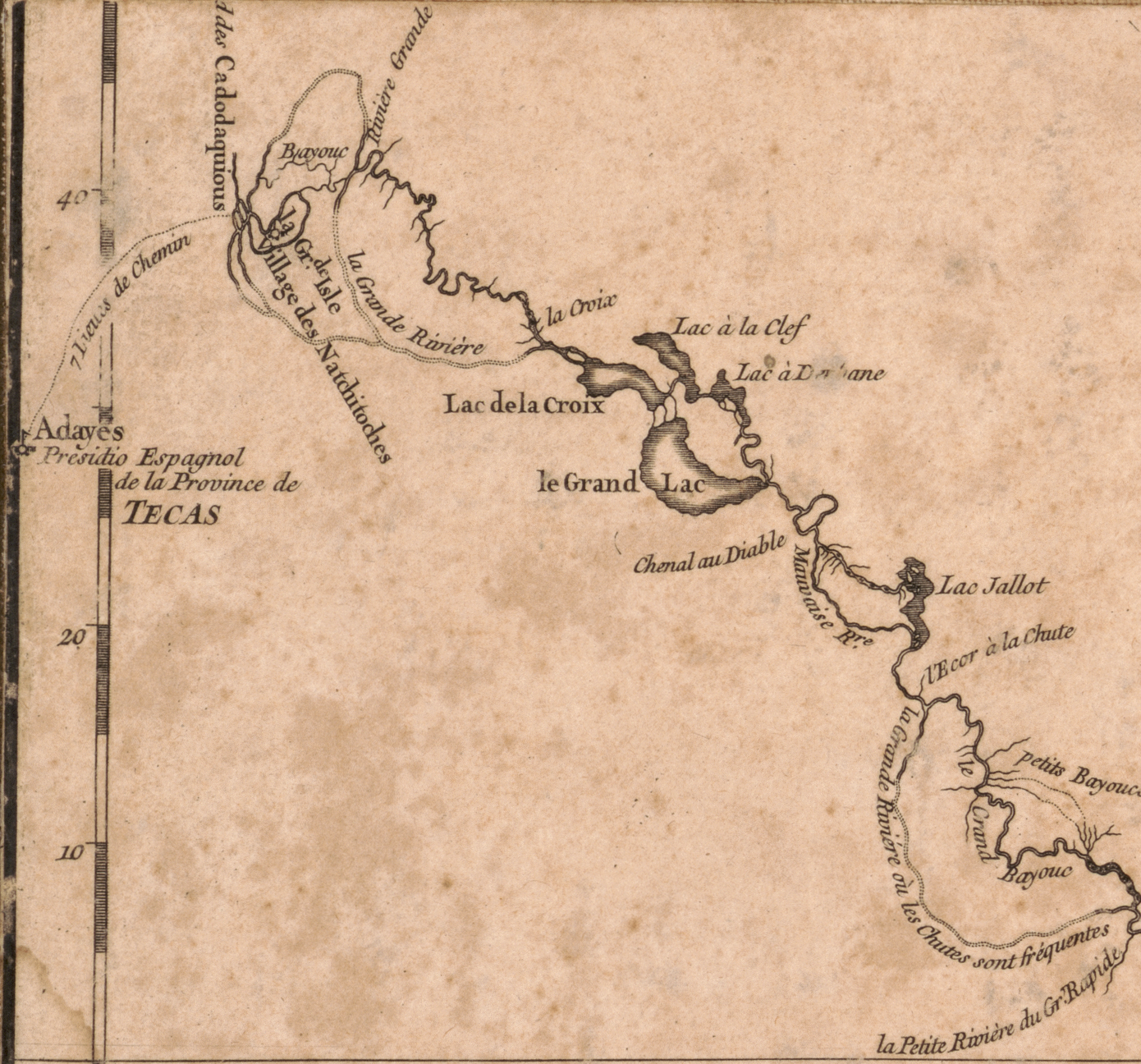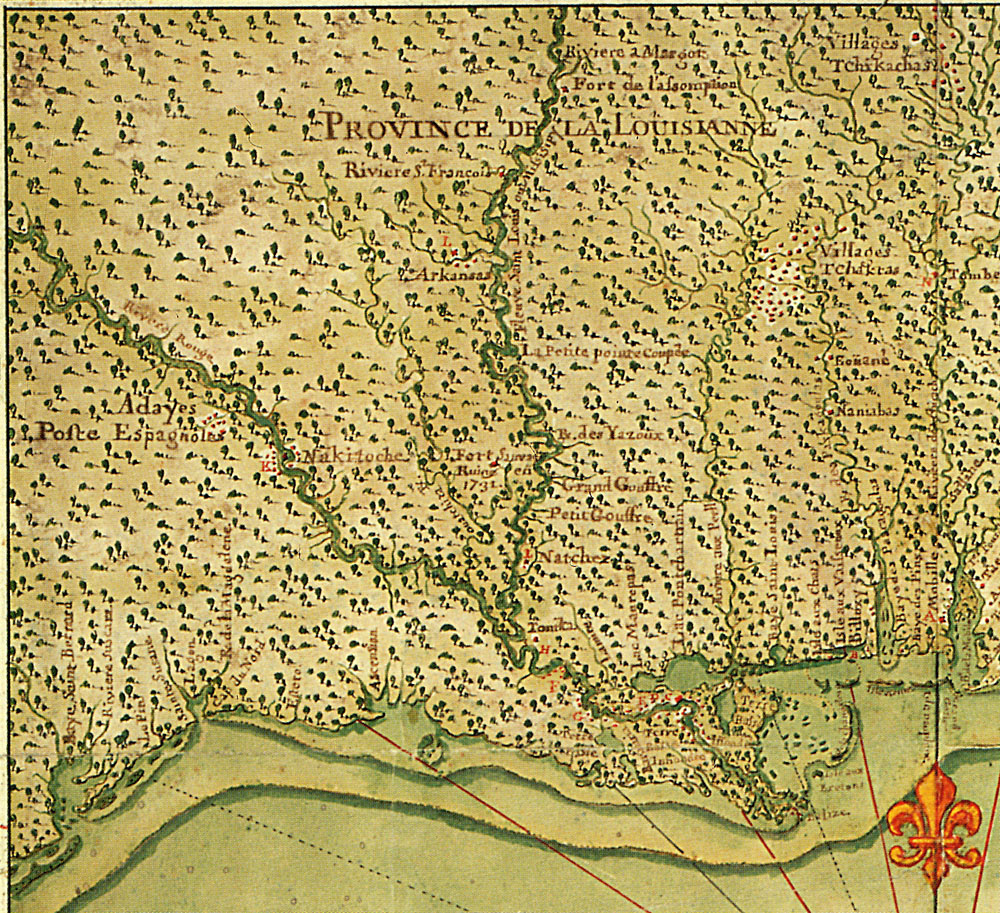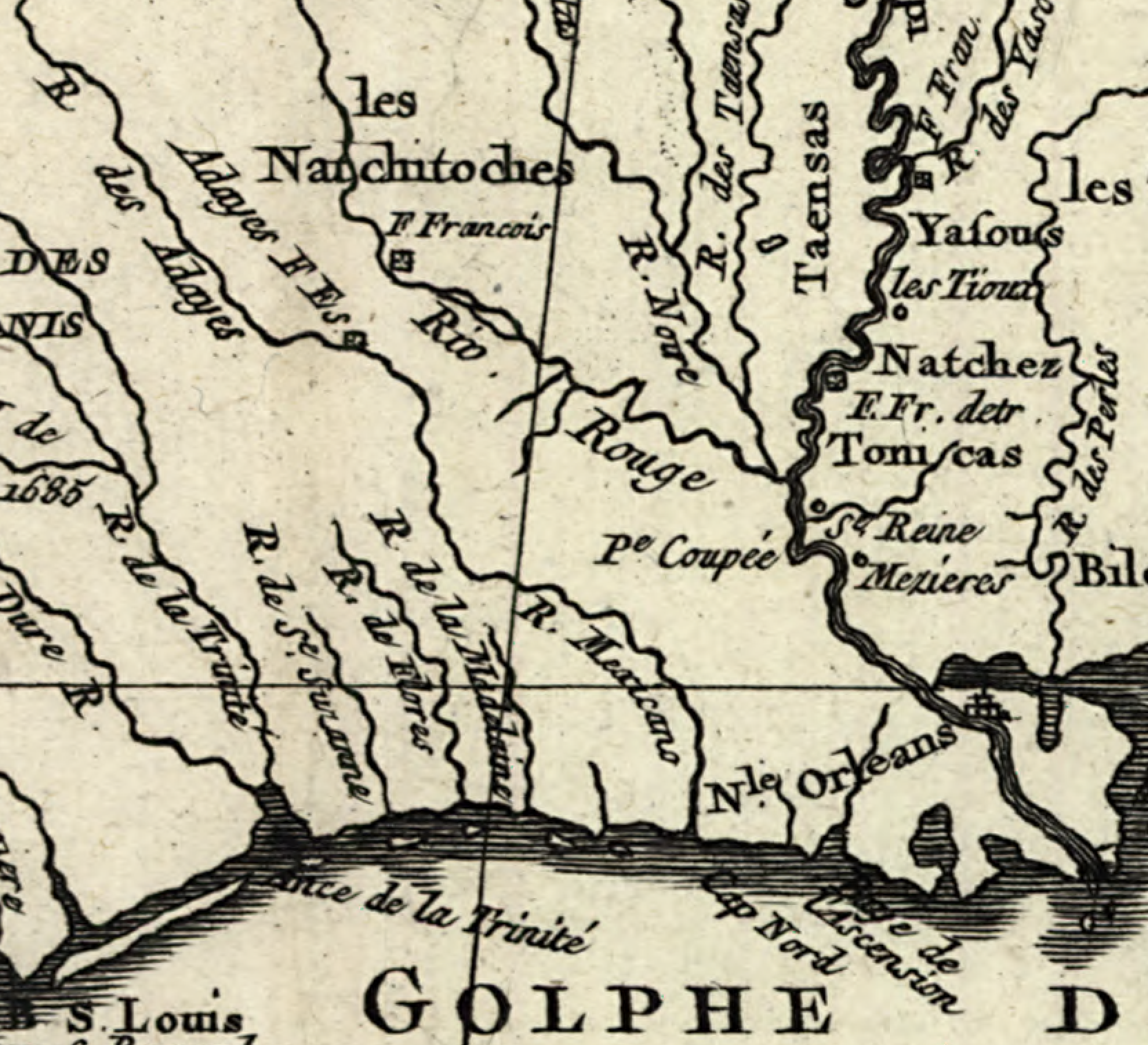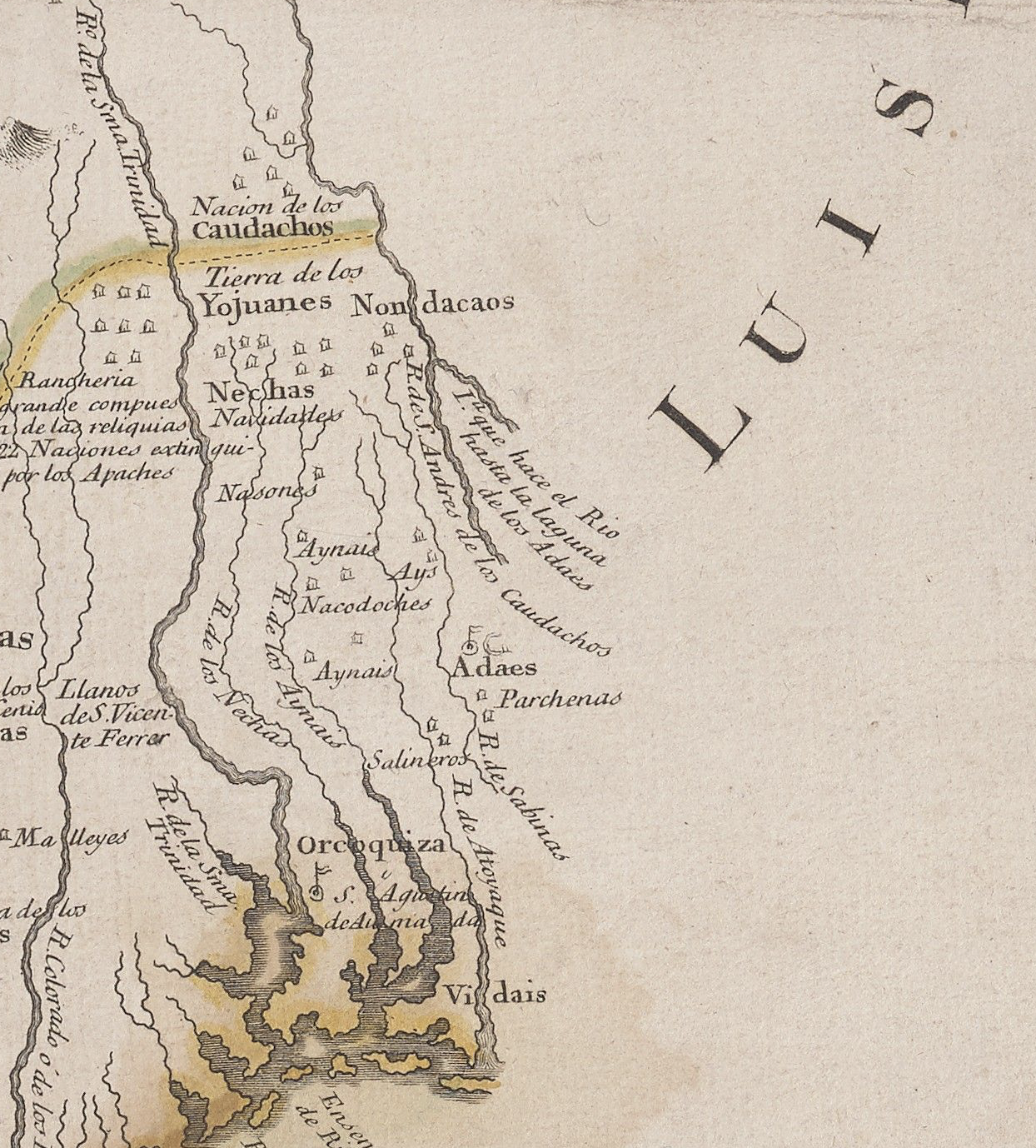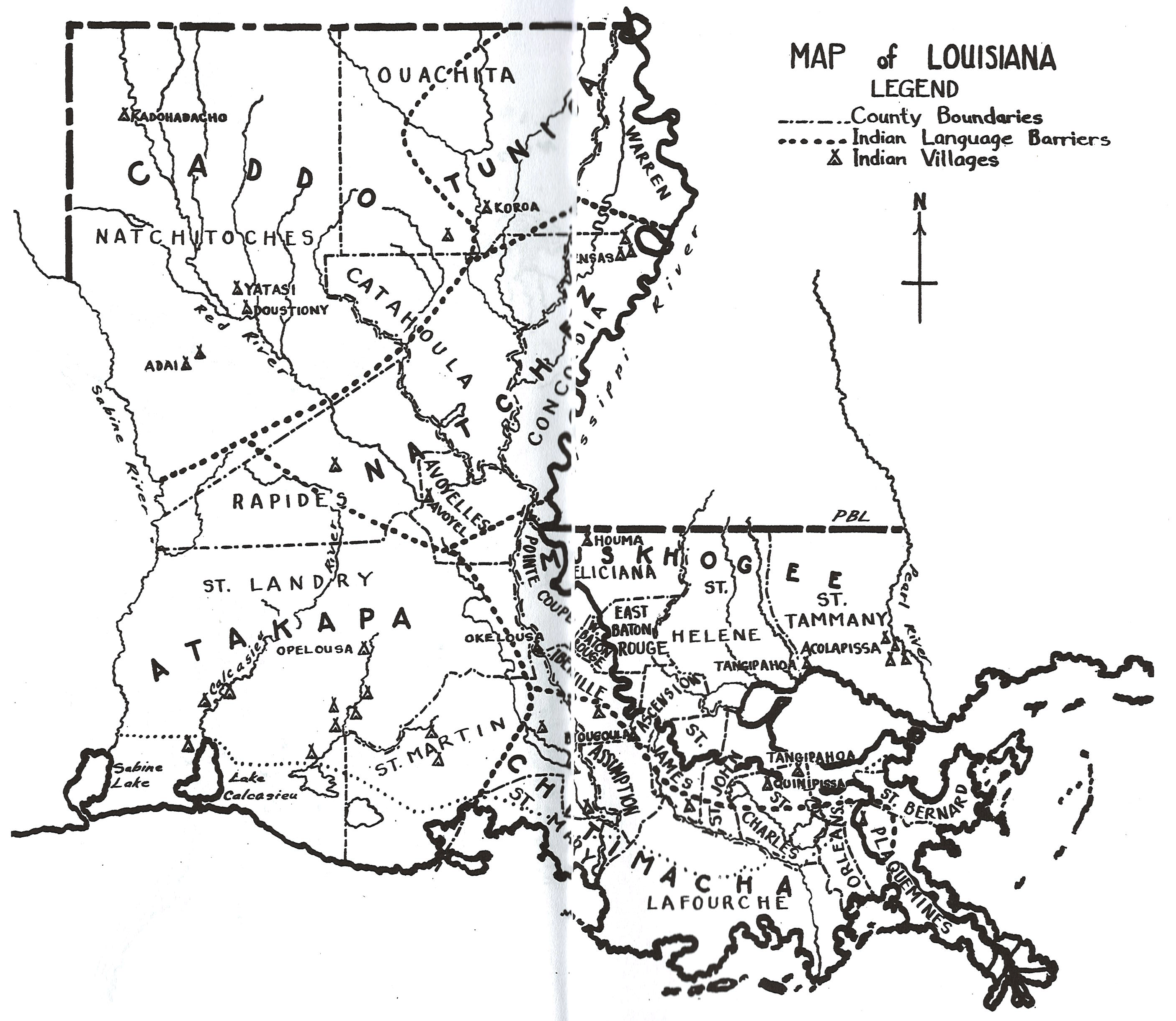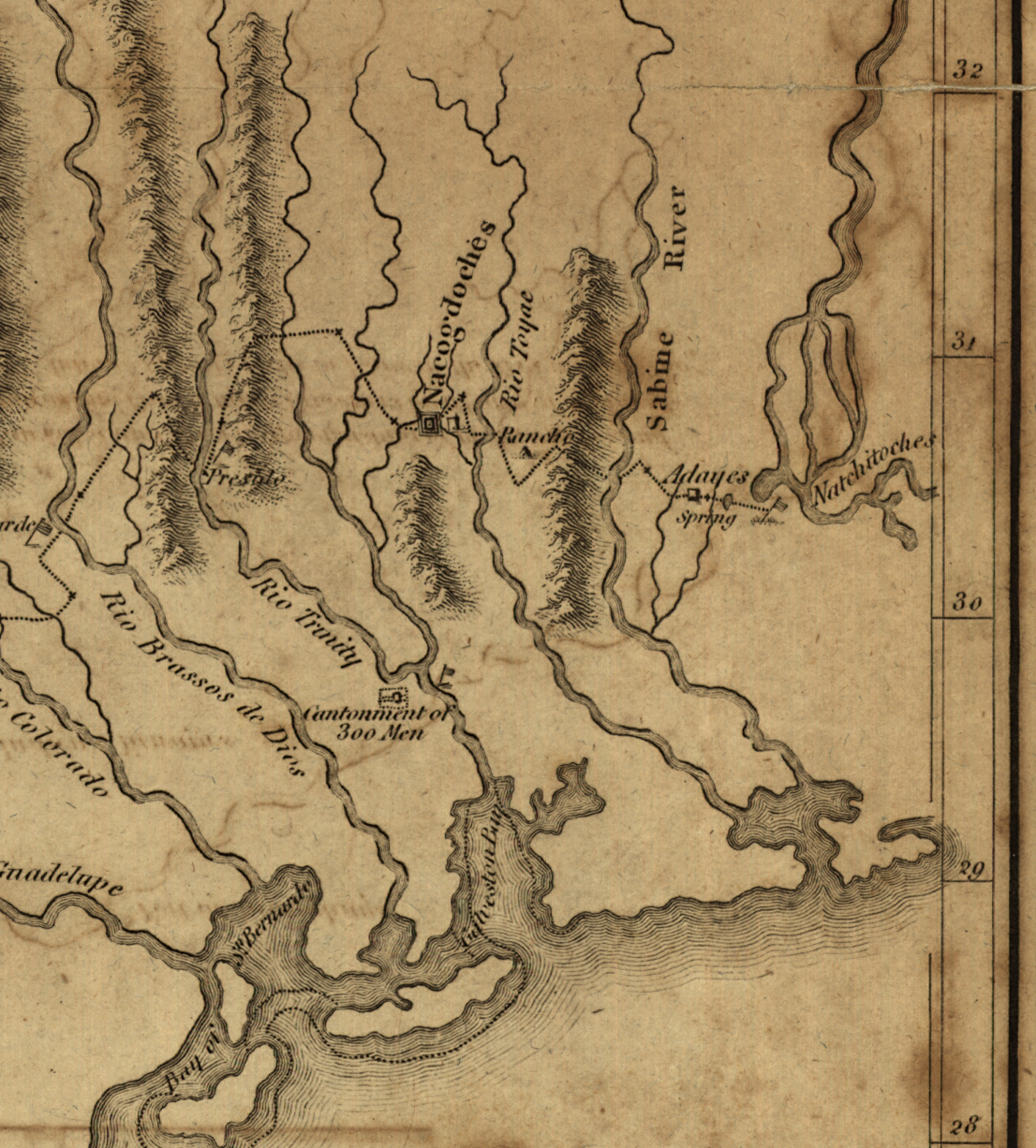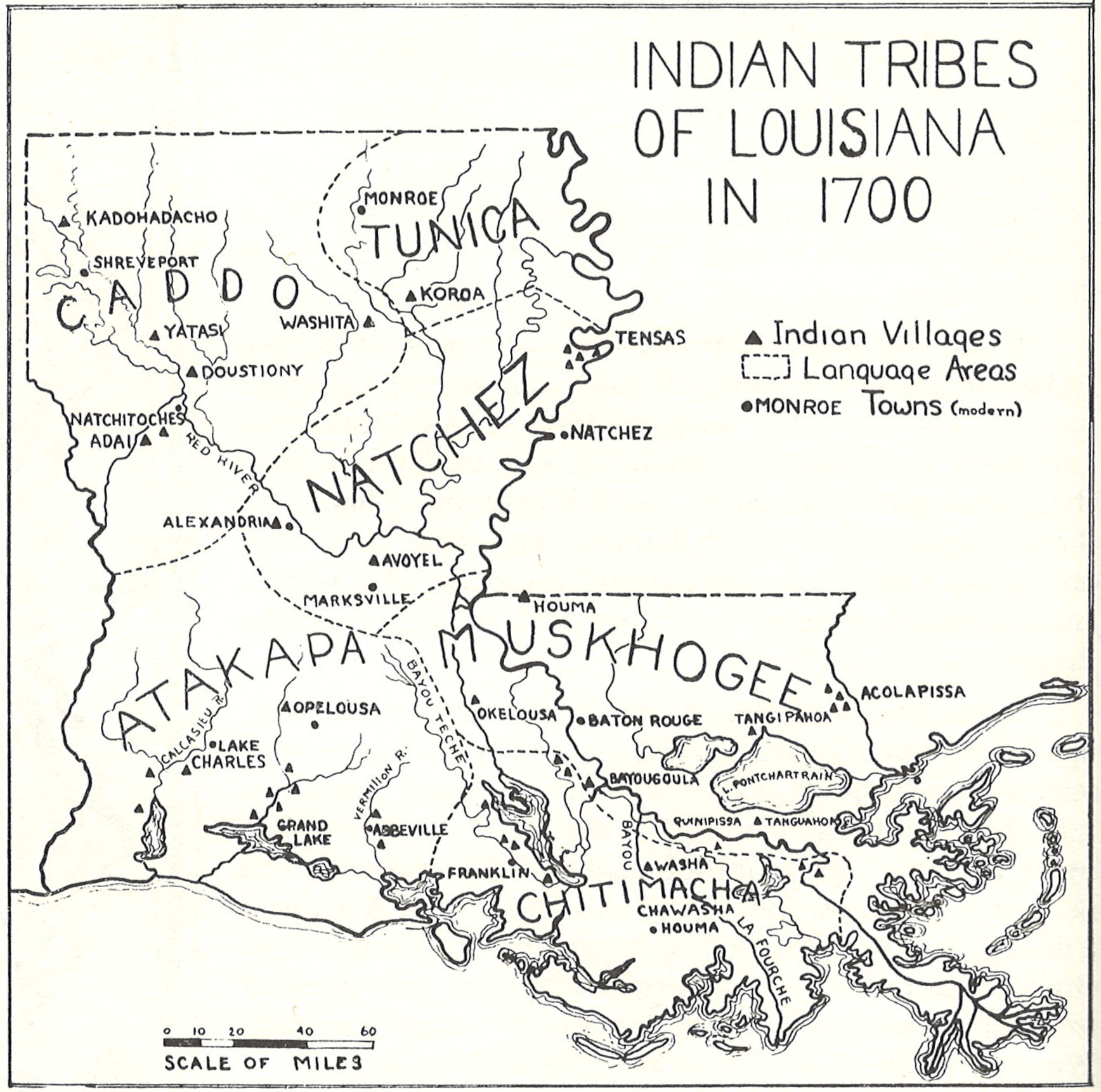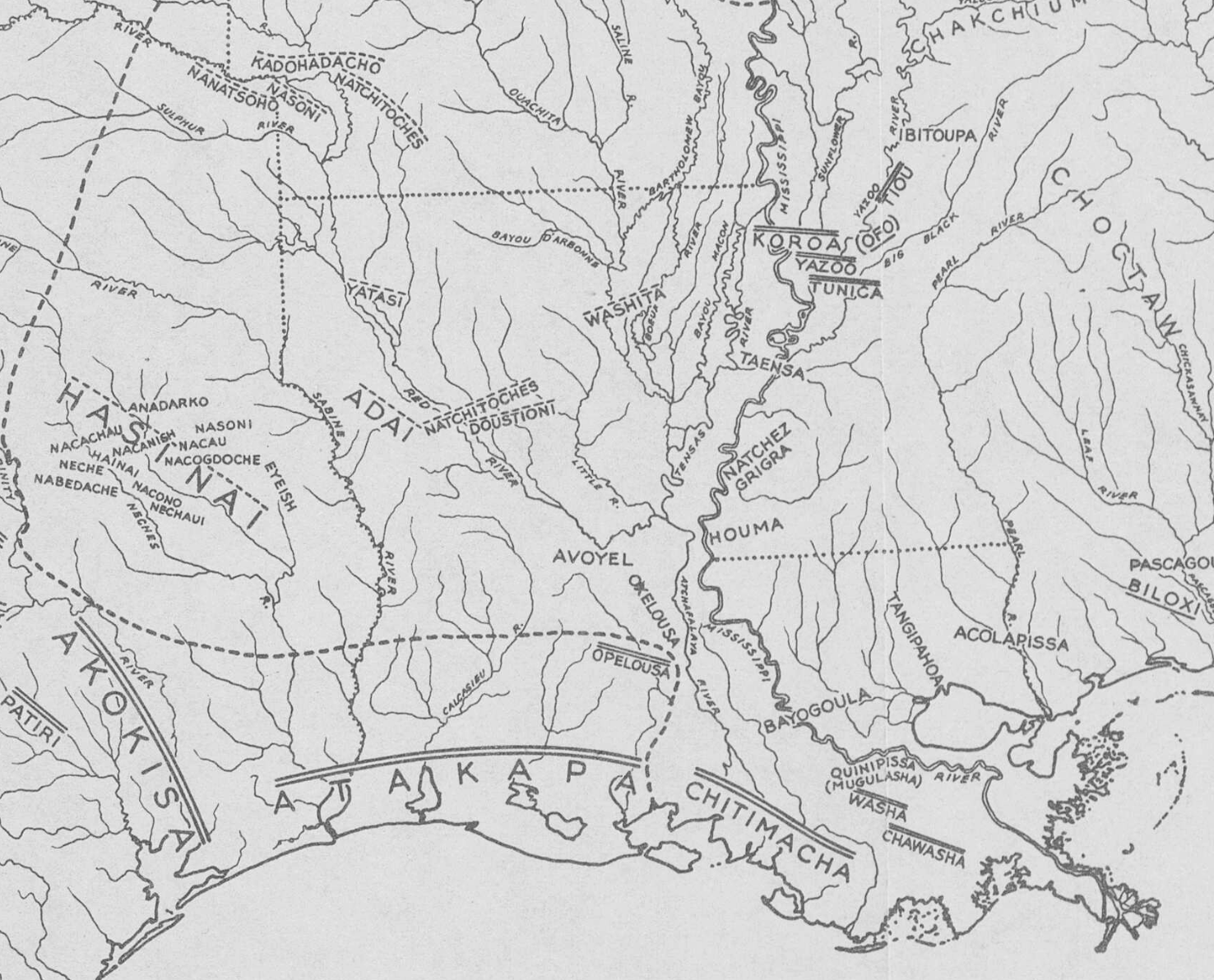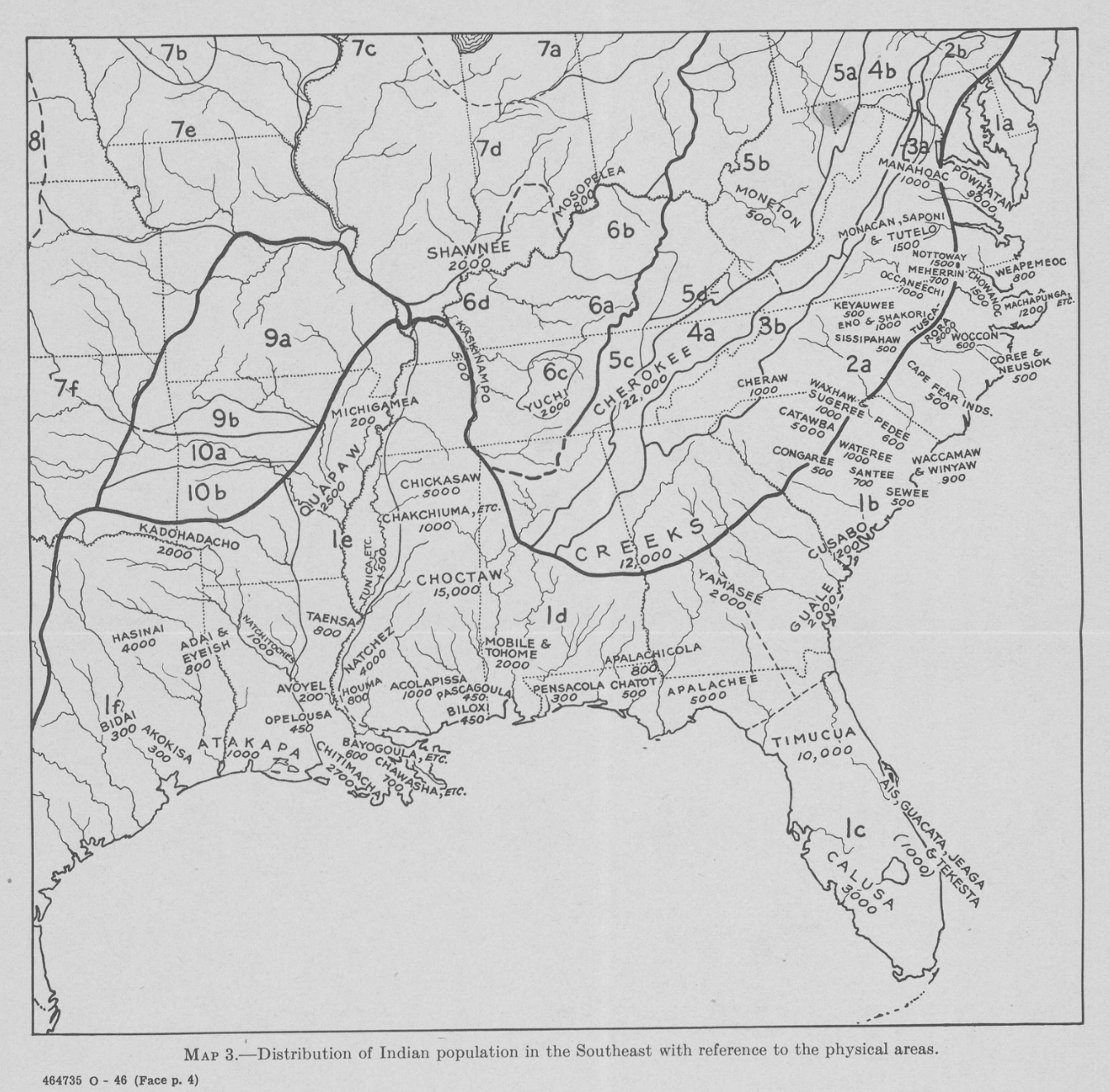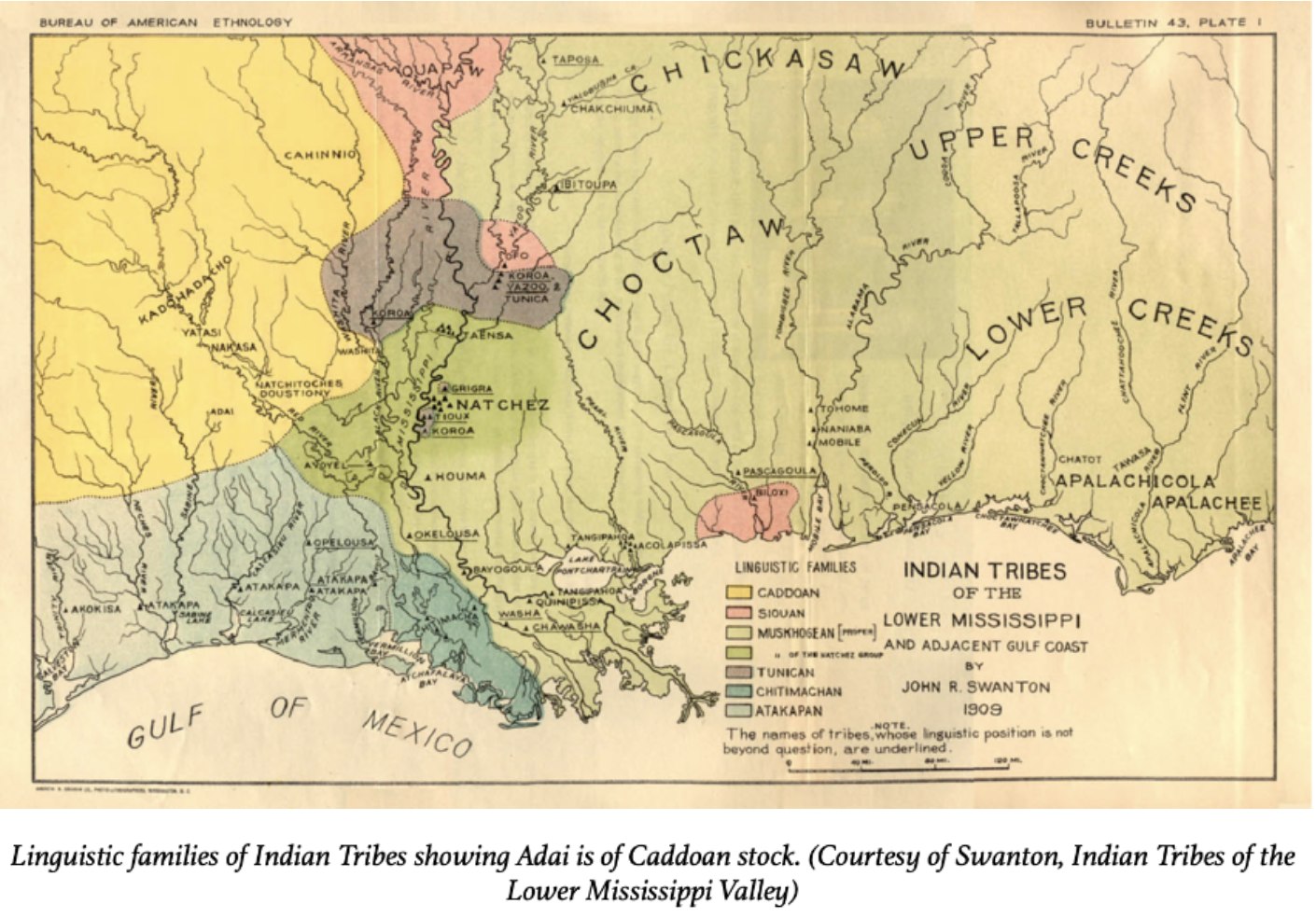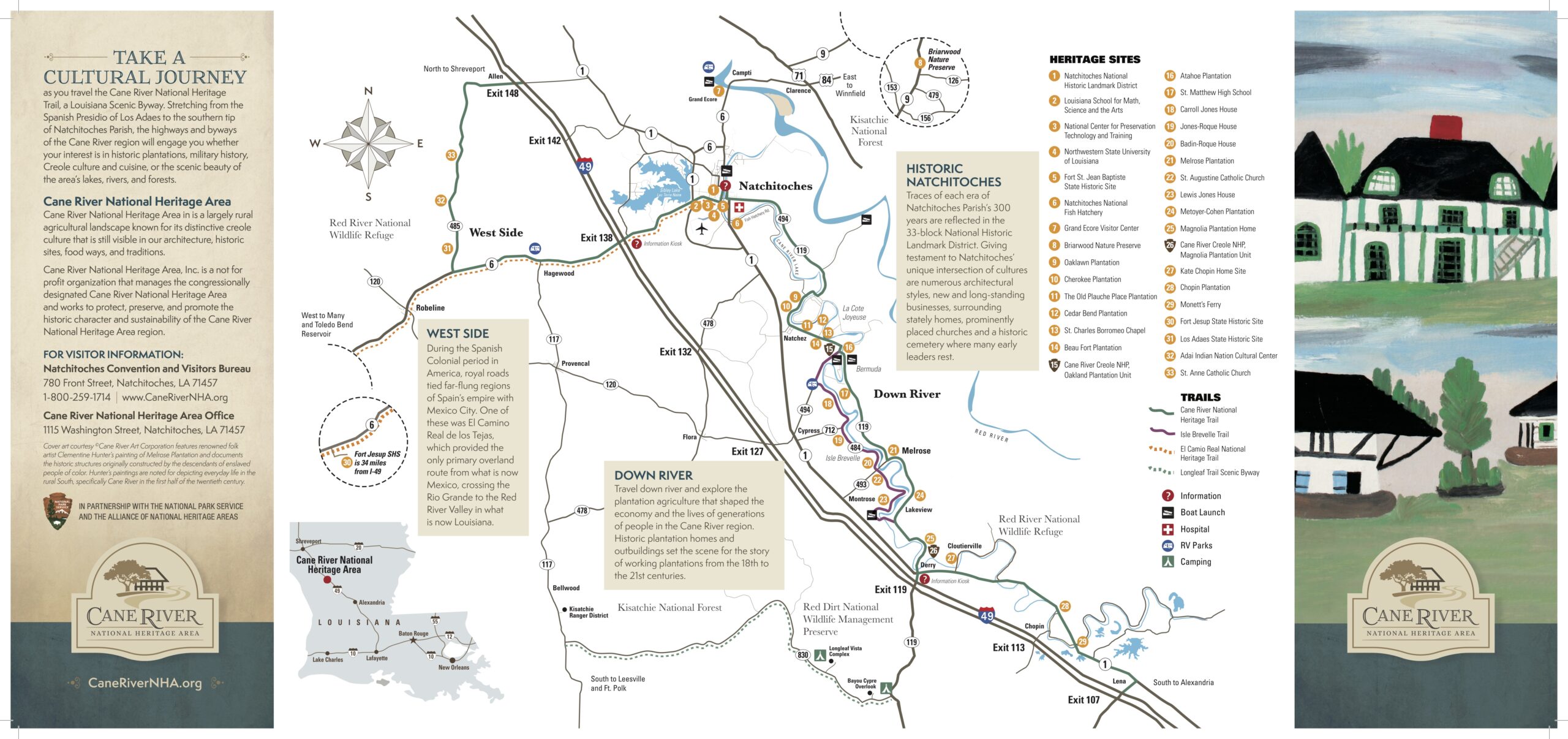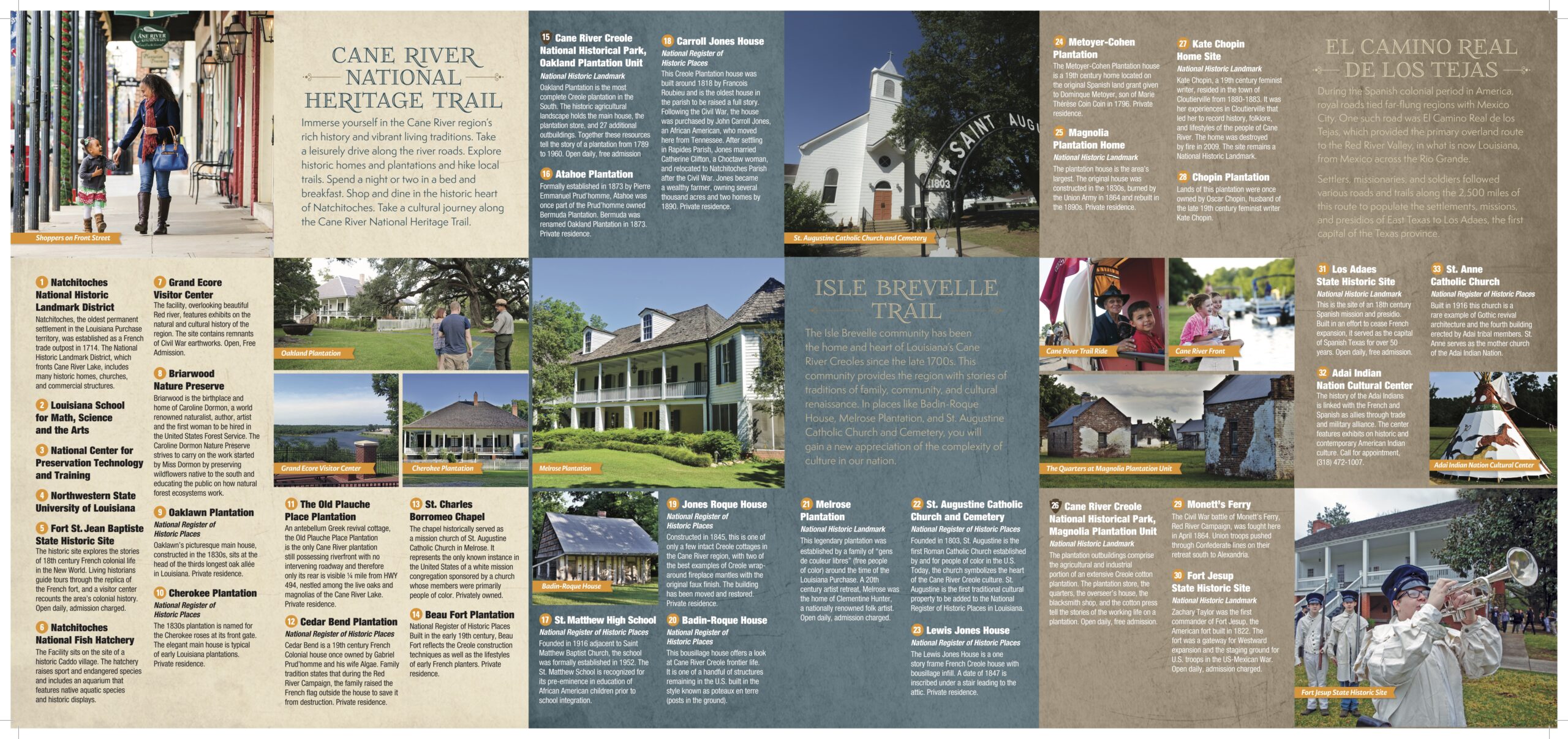Maps

Maps of Louisiana and Texas
A Graphical Record of History
The Adai Caddo are on the very first maps of Louisiana and Texas.
Throughout the Spanish and French colonial periods, the Adai Caddo villages and its territory are on each of these official government maps.
The Adai Caddo are the only Indian nation listed on French, Spanish, Portuguese, and British maps in the central and northwest region of Louisiana today known as Sabine, DeSoto, Vernon, Beauregard, and Natchitoches Parish.
The first global war in history was the Seven Years’ War (known as the French and Indian War in the Americas) involving Great Britain and Prussia on one side and France, Austria, Russia, Sweden, and Spain on the other. Battles were fought on every continent except Antarctica. The 1777 map documenting this treaty with the approval of all of the involved countries shows the Adai Caddo. Like all other maps of this century, the only Indian nation in this region of Louisiana is the Adai Caddo. The map shows two of the Adai Caddo villages located on a river named for them, the Rio de los Adiais (today known as the Sabine River).
Three maps are included from Dr. John R. Swanton, the highly acclaimed anthropologist, ethnologist, and linguist. Dr. Swanton created these maps after completing his doctorate at Harvard while working for the Bureau of American Ethnology of the Smithsonian Institution. Dr. Swanton would become the most prolific author with the Smithsonian and serve as editor of the American Anthropological Association’s flagship journal, American Anthropologist. Dr. Swanton’s first two maps show the location of Indians around the year 1650 and their estimated populations. The final map show the linguistic families of these Indians, and in particular, shows the Adai within the Caddoan stock.
The Cane River National Heritage Area has done a superb job with their map showing the historic sites in Natchitoches Parish including the Adai Caddo sites of Los Adaes, St. Anne Church, Adai Caddo Cultural Center, and Isle Brevelle. Please support these important heritage sites and local businesses.
Named for the Adai Caddo
Geographic Features, Roads, Churches, and Communities in Louisiana and Texas
- Adai Caddo Cultural Center – cultural center, museum, and pow wow grounds of the Adai Caddo in Natchitoches Parish
- Adai Caddo State Designated Tribal Statistical Area – U.S. Census Bureau area in Louisiana
- Adai Trails – today known as the Contraband Trail or the El Camino Real de los Tejas, which is part of the NPS National Trail System
- Adaie Village – “Adai” main village of the Adai Caddo in the 18th century located on the El Camino Real and Rio de los Adais near the bygone town of Pendleton and Pendleton Bridge (submerged by Toledo Bend Reservoir)
- Adois – “Adai”, the bygone community located NW of Robeline, LA with references in Natchitoches property deeds
- Ataho Bayou – “Adai Bayou” and today known as Little River on Isle Brevelle (island named for Adai Caddo Indian Jean Baptiste Brevel II) in Natchitoches Parish
- Ataho Mound – “Adai” Indian mound on Melrose Plantation on Isle Brevelle
- Ataho Plantation – “Adai Plantation” today known as Atahoe Plantation located on Isle Brevelle. Originally part of Prudhomme’s Bermuda Plantation, which was divided into Oakland Plantation on the west bank and Ataho Plantation on the east bank.
- Ataho River – “Adai River” and today known as Little River on Isle Brevelle
- Attoyac – “Adai” and community in Nacogdoches County, Texas
- Attoyac Bayou – “Adai Bayou” and formerly known as Attoyac River in Rusk and Nacogdoches Counties forming Sam Rayburn Reservoir
- Attoyac Church & Cemetery – “Adai” church and cemetery in San Augustine, Texas
- Bayou Adaise – “Adai Bayou” and today known as Dolet Bayou in DeSoto Parish, renamed after Pierre Dolet whose land grant called the waterway Bayou Adaise
- Bayou Adois – “Adai Bayou” in Natchitoches and Sabine Parish
- La Laguna de los Adais – “Lake of the Adai” and today known as Spanish Lake, the community of Spanish Lake, and Spanish Lake Highway (LA 485) in Natchitoches Parish
- Los Adaes – “the Adai” and the first capital of Texas for approximately 50 years in Natchitoches Parish
- Los Adaes State Historic Site – “the Adai” Louisiana State Park located in Natchitoches Parish
- Los Adais Road – “the Adai Road” in DeSoto Parish
- Old Adai Villages – bygone villages located near Bayou Pierre in Evelyn, LA with references in DeSoto and Natchitoches property deeds
- Presidio Nuestra Señora del Pilar de Los Adaes – “Fort of Our Lady of Pilar at the Adai” and the first Spanish fort in Louisiana
- Rio de los Adiais / Rio de los Adais – “River of the Adai” and today known as the Sabine River forming the border between Louisiana and Texas
- San Miguel de Cuellar de los Adaes – “Saint Michael of Cuellar (Duke and Viceroy of New Spain) of the Adai” and the second Catholic mission in present-day Louisiana
- San Miguel de Linares de los Adaes – “Saint Michael of Linares (Duke and Viceroy of New Spain) of the Adai” and the first Catholic mission in Louisiana

Dr. Milton Dunn
The Louisiana Historical Quarterly, 1920


